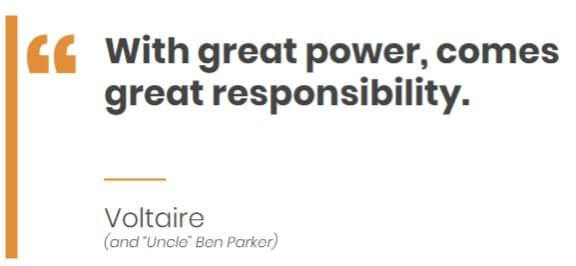Does your organization rely on WordPress for its website? If so, we suggest your team start planning its migration to Gutenberg—it’s the new-and-improved version of WordPress that will be a required update for all users by next year. We want you to get ahead of the curve, rather than be rushed into a last-minute process that introduces unnecessary bugs or that blows the budget.
Fortunately, we believe you can approach this migration with enthusiasm! As we mentioned in a prior post, Gutenberg’s features unlock new opportunities to strengthen your online game through better analytics, more customization options, and greater ease in streamlining content creation.
The technical improvements offered by Gutenberg offer an important opportunity to step back and think strategically about your site as a business tool.
In order to take full advantage of improved functionality, you’ll want to consider your internal processes for how content gets updated on your site; some of these may need to be strengthened or shifted. In addition, Gutenberg introduces some exciting features that you may have assumed would be out of reach without a big-ticket redesign! Your team should be intentional about deciding whether to pursue some of these now – and benefit from potential improvements in efficiency and content relevance– or hold off for another day.
As usual, we love being really specific about the considerations at play. So, here are a few examples in which improvements in WordPress functionality may oblige deeper thinking from your organization.
1- Gutenberg greatly increases your team’s ability to customize webpages—which requires you to get crisper about how much flexibility (and guidance) to give staff members in making updates.
 Gutenberg democratizes the process of designing web pages, which overall is a beautiful thing! Before, you used to need a developer to create pages with design components that diverged from your standard page templates. Now, members of your team can easily create pages that are built to purpose. Drag-and-drop content blocks make it easy to add multimedia elements like videos, audio files, and image galleries, and rearrange all this content in any order desired —all of which can make your website more compelling.
Gutenberg democratizes the process of designing web pages, which overall is a beautiful thing! Before, you used to need a developer to create pages with design components that diverged from your standard page templates. Now, members of your team can easily create pages that are built to purpose. Drag-and-drop content blocks make it easy to add multimedia elements like videos, audio files, and image galleries, and rearrange all this content in any order desired —all of which can make your website more compelling.
However, with great power comes great responsibility! How do you weigh these benefits of flexibility against the need for some consistency in your brand, style and editorial approach on the web? A governance review for site management and content production helps you strike a suitable balance. A thorough review is bound to surface important questions.
For example :
- Are your current protocols for content review adequate, or do they need to be revised?
- Are your style guide and editorial guidelines easy for staff members to use in their everyday work?
- How many employees should have administrator privileges?
- What user permissions should other user levels have?
In addition, it’s likely that you will want some pages of your site to have more design flexibility than others. Fortunately with Gutenberg you can offer staff different design options for different kinds of pages. You may want to take a fresh look at your page templates as part of this process, deciding which elements should remain consistent across all pages, and where design flexibility will be most useful.
2- Gutenberg has easy-to-use and powerful tools for surfacing related content alongside stories or articles on the same topic. This can save you time and make your website more relevant, but requires crisp adherence to taxonomy.
Ever get sucked into an online rabbit hole on the New York Times (or another favorite news source), where one story somehow pulls you into five related articles on a topic that intrigues you? Well, your site can be (almost) as addictive! With Gutenberg there’s no longer a need to manually add relevant links into each of your pages, or to develop custom related content functionality on individual pages. A related content block (either custom built one time, or via plugin) can be replicated anyhow and anywhere across your side – let your taxonomy do the work for you! Pull blog posts on to staff pages, create a content stream of events and posts on a program landing page, and any configuration you can imagine! This is a huge strategic opportunity to improve user engagement.
Yet, if your organization is like most nonprofits we work with, your team might not be 100% consistent about how it’s currently tagging content. You might not even have a clear taxonomy (really, let’s discuss taxonomy). A fresh look at your taxonomy and its use and governance can help you implement best practices that will free you to get the best of this functionality with little-to-no developer help.
3- Gutenberg’s flexibility enables simpler A/B testing to optimize conversions based on site design. This can boost your effectiveness—but probably requires an upgrade in your team’s capabilities.
Consistent testing and iteration of design changes to your site via A/B testing is a powerful tool for maximizing the performance of your website to drive organizational goals. It can help you optimize for conversions – like page views, email signups, donations, or membership renewals – as well as test out design changes before implementing them sitewide, avoiding unnecessary costs. Gutenberg’s core promise (the democratization of page design), along with a tool like Google Optimize, puts the ability to conduct A/B testing directly in your hands.
Many organizations have avoided conducting A/B testing. Limited budgets needed to be focused on critical site bugs and enhancements, and those dollars couldn’t be wasted on having developers implement features you might just roll back later if they didn’t perform.
Now you have infinite ability to conduct your own tests! Move your donation button to different spots on the page to see if it gets more attention. Compare the performance of a photo gallery vs video on page engagement. Swap out an email sign up block for an info request form to determine what users are really looking for at the bottom of a blog post. The possibilities are endless! This is a powerful way to continuously strengthen the punch of your site, particularly for pages that drive fundraising, newsletter signups, or other critical actions that support your mission.
Let me at it – I want Gutenberg now!
Sure, you could just pay a vendor to migrate your current site as quickly and cheaply as possible. Indeed, if you have a bare-bones site that’s serving you well, this may well be the right approach! But for most organizations, the flexibility in design afforded by Gutenberg would make it unwise to simply copy-and-paste page templates that aren’t nearly as compelling as what Gutenberg can now do for you, or could open up risk in governance and brand consistency.
Our approach to migrating sites to Gutenberg (or building them new!) includes intentional time for a site audit, governance review, and other assessments to ensure you’re well positioned to make the most of the tool, and save time and money in the long run. Hopefully I’ve convinced you that Gutenberg opens up a strategic opportunity to do things that were previously cost-prohibitive—creating a more engaging and dynamic site with a longer shelf life. Get in touch if you’re ready to unlock these capabilities for your organization!





